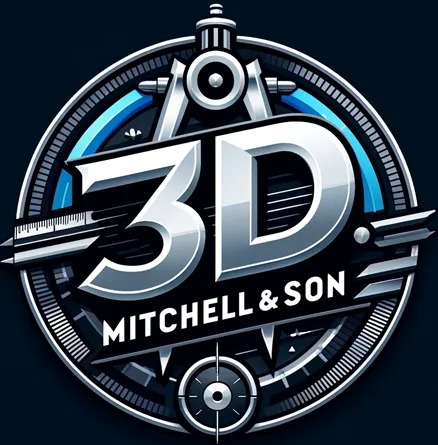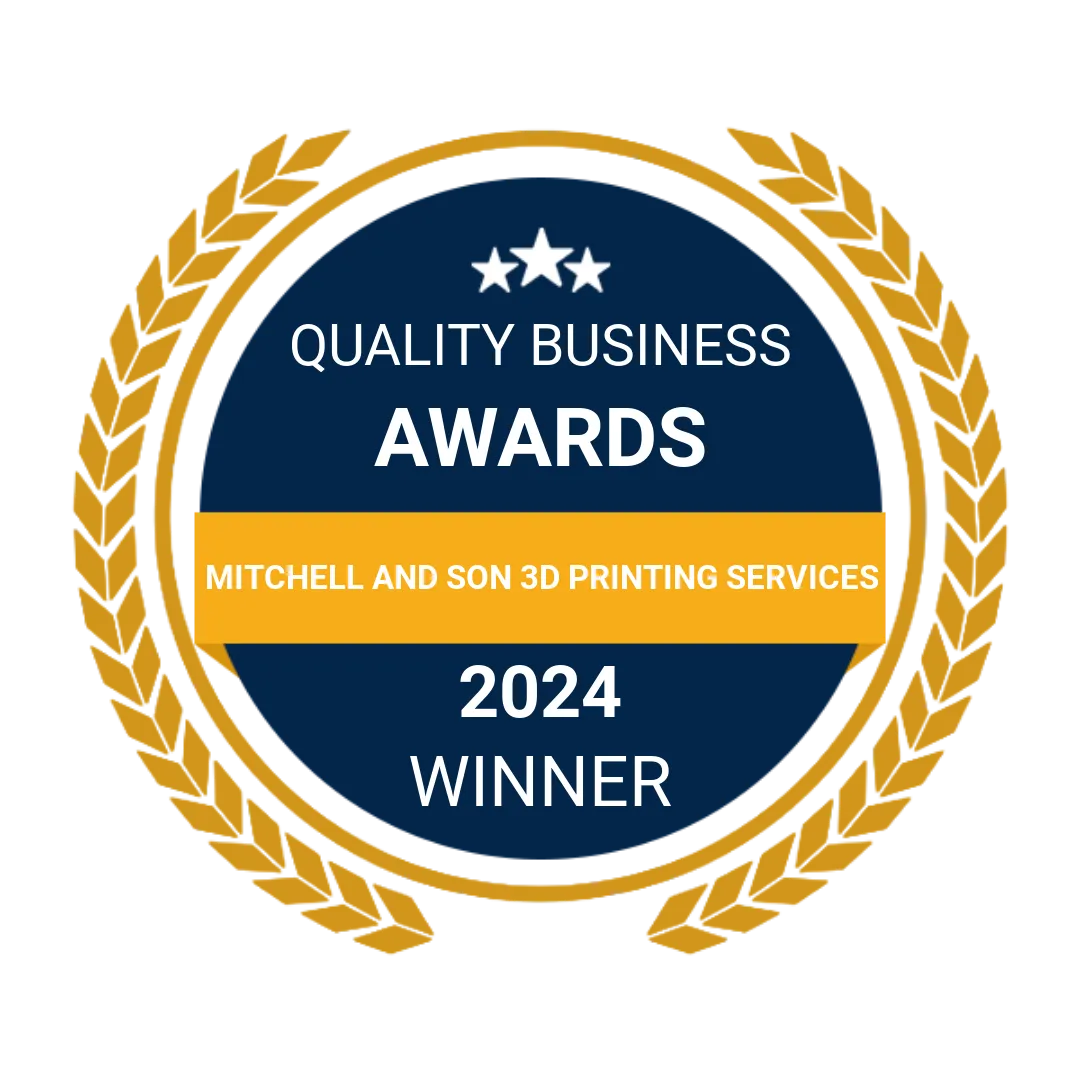Rapid turnaround, no compromise/div>
From first enquiry to finished part, Mitchell & Son Additive Manufacturing delivers fast, reliable 3D printing without cutting corners.
From concept to component
Whether you have a sketch, a CAD file, or a reference photo, we turn ideas into accurate, functional printed parts.
A large part of our work involves replacing components that were never designed to be replaced individually. Plastic clips, brackets, housings, covers, guards, mounts, and spacers often fail first, yet are bundled into much larger assemblies or discontinued entirely. For maintenance teams and procurement managers, this creates a costly problem. Injection moulding tooling is expensive, lead times are long, and minimum order quantities rarely make sense for a single failed part. Using additive manufacturing, we can replicate and redesign those components quickly, without tooling, and without committing customers to unnecessary volumes. We work from broken samples, partial parts, photographs, or measurements, rebuilding the geometry in CAD and correcting weaknesses where needed. This approach is used daily for manufacturing, transport, marine, restoration, and general engineering clients throughout Southampton, Portsmouth, Fareham, Winchester, Basingstoke, and surrounding Hampshire areas.
Engineering-grade 3D printing
We specialise in strong, precise components using proven materials suited for prototyping, tooling, and end-use parts.
Local expertise, professional results
Based in the UK, we provide dependable additive manufacturing support with clear communication and honest lead times.
Material choice is one of the most important decisions we make, and it is never guessed. ABS, PETG, nylon, and reinforced engineering plastics all behave differently under load, heat, UV exposure, and repeated movement. ABS is strong and durable but will degrade outdoors over time. PETG offers improved UV resistance and flexibility. Nylons provide strength and wear resistance where movement and friction are involved. Reinforced materials are used where stiffness and dimensional stability matter. We explain these differences clearly so customers understand why a particular material is recommended and what trade-offs exist. For emergency replacements, the goal is often to restore function quickly without creating another failure point. Where parts are expected to remain in service long-term, durability and lifespan are prioritised instead.
Designed for real-world use
Our prints are made to fit, function, and last—ideal for engineering, product development, and bespoke applications.
Flexible input, consistent quality
CAD models, measurements, or photos—send what you have and we’ll guide the rest, ensuring repeatable, high-quality output.
Emergency 3D printing only works when speed and accuracy are balanced. Producing a part quickly that fails shortly after installation helps no one. For that reason, we always ask how a part is used, how often it moves, and what happens if it fails again. Infill percentage, wall thickness, print orientation, and material selection all affect strength and cost. A part printed at low infill may look fine but fail under load. A part printed solid will be stronger but uses more material and time. These decisions are explained upfront in plain language so maintenance managers and engineers can make informed choices. Our quoting process is straightforward, honest, and focused on getting the right result rather than the fastest possible output at any cost.
Problem-solving through printing
We help reduce lead times, replace unavailable parts, and refine designs through practical, cost-effective 3D printing.
Straightforward quoting, clear outcomes
Transparent pricing, realistic timelines, and parts that meet expectations—no guesswork, no unnecessary complexity.
For procurement teams, predictability matters. Short-run production is handled with consistency so repeat orders behave the same way each time. Once a part has been proven in service, producing replacements becomes quick and reliable. This is particularly useful where legacy equipment is still operational but no longer supported by the original manufacturer. Additive manufacturing allows businesses across Hampshire and the South Coast to extend the life of assets without redesigning entire systems. It also allows design improvements to be made incrementally, addressing known weak points without committing to full retooling. This flexibility is one of the main reasons emergency and industrial 3D printing has become a practical manufacturing tool rather than a last resort.
Trusted by engineers, makers, and businesses
We work with individuals and organisations who value dependable results and professional standards.
Manufacturing support, not just printing
We assist with tolerances, orientation, and design considerations to avoid costly reprints.
Based in Southampton, Mitchell & Son supports businesses throughout the Solent region that need fast, sensible manufacturing solutions. Injection moulding has its place, but the upfront costs often run into thousands before a single part is produced. For low-volume, emergency, or discontinued components, additive manufacturing is often the only commercially sensible option. We also offer post-processing where required, including sanding, surface finishing, and reinforcement, to improve durability or appearance when needed. These services are optional and applied only where they add real value. The objective is always the same: produce a part that works properly, fits correctly, and does its job without becoming the next problem.
Optimised for speed and reliability
Our workflow is designed to minimise delays while maintaining consistent print quality.
Replace, improve, adapt
Ideal for discontinued parts, custom brackets, housings, and functional replacements.
Everything we do is driven by real-world use. If a part is ornamental, it can be produced cheaply and quickly. If a part is handled daily, subjected to force, or critical to safety, it is built accordingly. We do not oversell materials or processes that are unnecessary, and we do not underspec parts that will fail prematurely. This approach has allowed us to support manufacturers, engineers, restorers, and maintenance teams across Southampton and Hampshire with solutions that make practical and financial sense. When something breaks, the priority is getting it working again reliably, not experimenting with technology for its own sake.
Clear communication throughout
You deal with real people who understand manufacturing, timelines, and technical constraints.
Practical materials, informed guidance
We help you select the right material for strength, finish, and application—no unnecessary upselling.
If you are dealing with a breakdown, an obsolete component, or a supply issue that cannot wait, emergency 3D printing provides a fast and flexible solution. By combining practical experience, CAD capability, and material knowledge, we are able to produce functional parts without the cost and delay of traditional manufacturing methods. This is what we do every day, and it is why customers return when the next problem arises. The goal is not just to print a part, but to solve the problem that caused the failure in the first place.
Built for prototyping and production
From one-off prototypes to short production runs, our 3D printing scales with your requirements.
Precision where it matters
Every print is produced with accuracy in mind, ensuring parts fit, align, and perform as intended.
Where to go next







